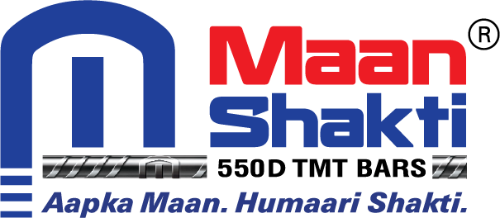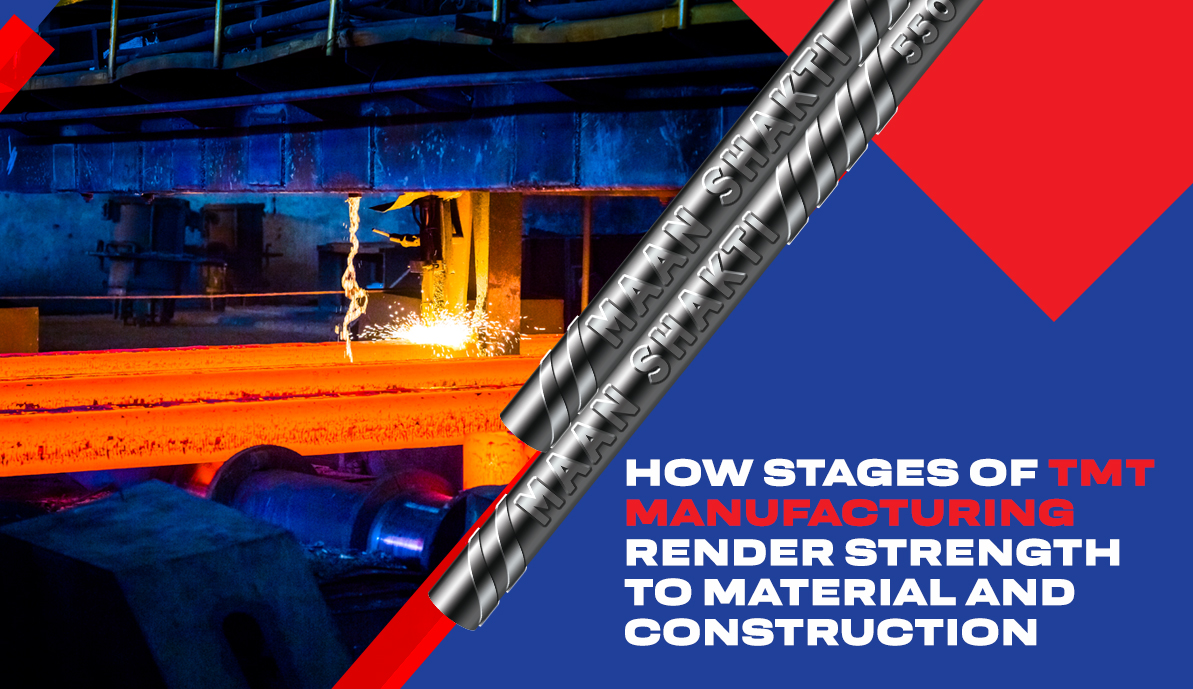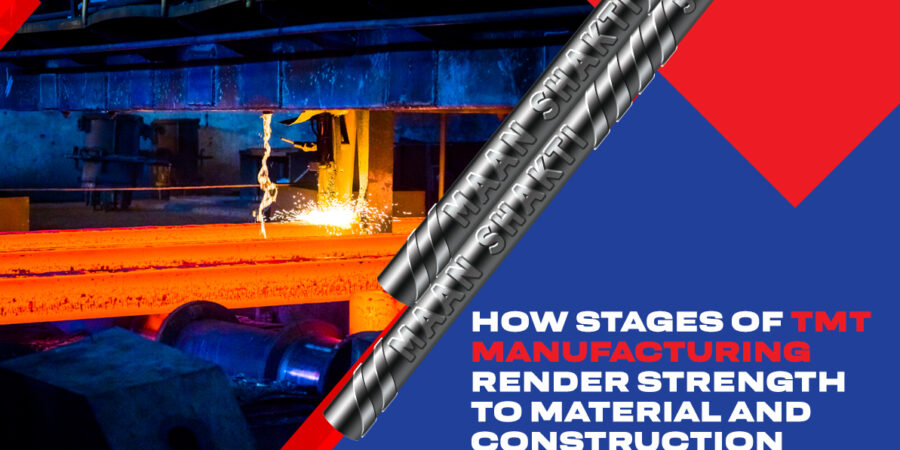The other name for strength is the TMT bar, which offers optimum support for all your construction. Whether it’s a high-storeyed building or a bridge, TMT bars can be designed to support all. But where can you find the best quality TMT bars? And how do we determine their performance?
Maan Shakti is one of the leading TMT bar manufacturers in West Bengal. Our TMT bars are the spine and frame of every construction. Due to their corrosion-free features and sturdy nature, our steel bars are considered among the best in the country.
In this blog, we’ll discuss how different manufacturing stages of TMT bars render strength to material and construction. Continue reading to know more.
Importance of the 3-Stage TMT Manufacturing Process
Sourcing Raw Materials and Melting
Our first stage in manufacturing TMT bars involves sourcing raw materials from high-grade steel bars. We then check the quality of each steel bar, sort it, and select TMT bars.
After sourcing, we proceed with the melting process. During the melting stage, the principal iron ore and impurities are gradually separated. Our highly advanced spectrometer accurately measures each chemical component to identify the purity of our TMT bars.
We indulge in consistent quality checking during material selection and the melting process. This is what makes our products one of the best TMT bars in West Bengal. A series of quality checks increases the sturdiness and resilience of the final product outputs.
Casting and Making Steel Billets
Continuous Casting is crucial to constructing TMT bars and is a significant reason for their resilience. To maintain the cycle of TMT manufacturing, we include an automated continuous casting machine. With this advanced casting machine, we have revolutionised the steel production process by enhancing quality and strength.
Once the casting process is completed, we proceed to manufacturing steel billets. For sequencing, the temperature in our rolling mills ranges from 1200 to 1300 degrees Celsius. We evaluate and modify the temperature-controlling process to enhance the heat resistance of the TMT steel.
Greater temperature control helps the steel to turn into a ferrite pearlite structure. As a result, the core of our TMT bars gets more robust while the inner core remains soft.
Thermo-Mechanical Treatment
Here comes the final stage of Thermo-Mechanical Treatment. This process is further segregated into three main stages: quenching, Self-temperaturing, and cooling. Unlike regular steel bars, Thermo-Mechanical Treatment increases core sturdiness with the steel rods. Here’s how each stage can improve quality and resilience.
Quenching
We extensively use the Thermex System to perform the heat-quenching process. As the hot-rolled steel bars are extracted from the rolling mill, they enter a water spray called the Thermex System.
The Thermex process helps the outer layer of steel bars decrease rapidly, making it more challenging. Meanwhile, the inner core gains bendability properties, making the TMT Bar highly ductile. These leading TMT bars in West Bengal are preferred across construction industries as resilient items that can withstand extreme pressure.
Self-Tempering
After the quenching process is completed, heat from the inner core of the TMT bars is transferred to the outer core. This transfer of heat across steel surfaces is known as Tempering.
As one of the best TMT companies in West Bengal, we prefer a self-tempering process. This strengthens the inner structure of TMT bars while making the outer core heat-resistant.
Cooling
We prefer atmospheric temperature for cooling our TMT bars. When they come in contact with atmospheric air, their austenitic core turns into a ferrite-pearlite structure. This increases their weldability and, thus, improves the resilience of your construction.
Understanding the Significance of Cross-Ribs and Grade Markings
TMT bars are designed with cross ribs to increase their concrete gripping ability. As one of the leading TMT bars in West Bengal, our products can support any construction type.
We include cross-ribbed designs on TMT bars, which are targeted to increase the grip strength. If concrete bonding increases, the risks of wall cracks due to seismic shocks might decrease.
On the other hand, the different grade markings, ranging from Fe 415 to Fe 550D, determine the strength offered. Grades like Fe 550D can support diverse architectural designs and enhance sturdiness over time.
Key Takeaways
Thermo-mechanical treatment has redefined the quality of steel bars, making them highly resilient. Our TMT Bars are designed to protect your building structure against earthquakes and other natural disasters. At Maan Shakti, we offer you only top-quality products for diverse architectural requirements.
If your construction project demands innovation, our resilient TMT Bars will offer you the best support.


